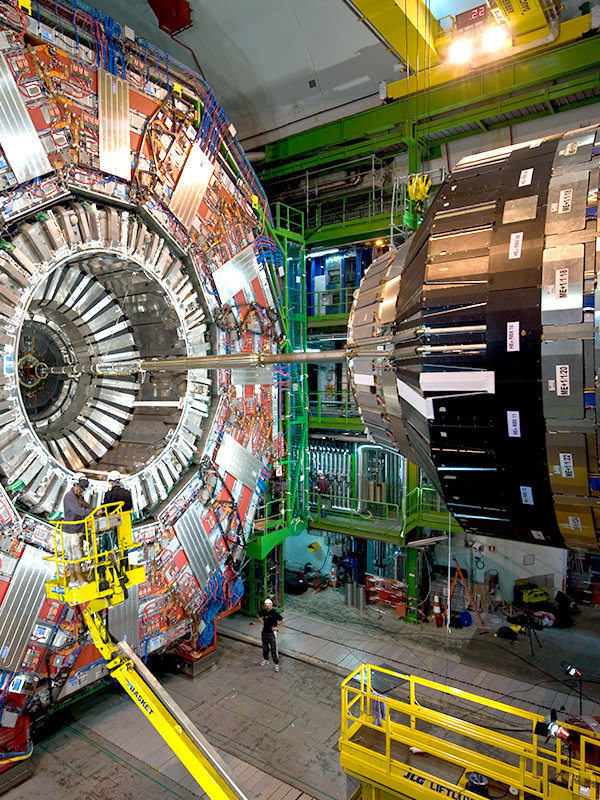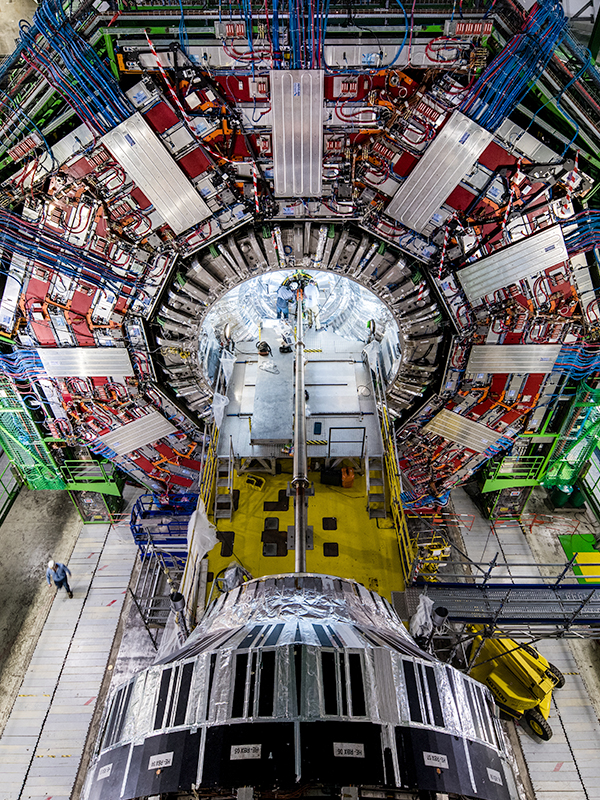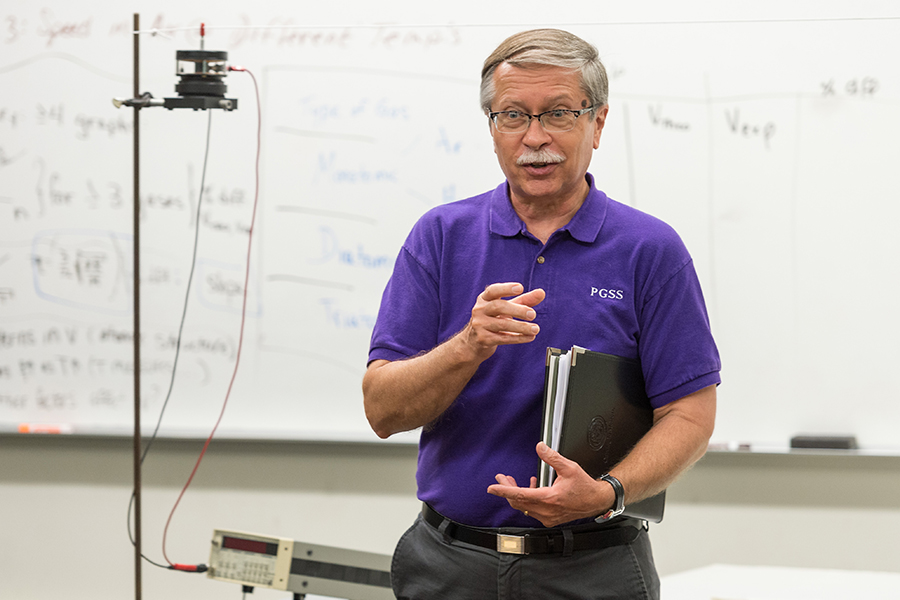

NSF Grant Paves Way for AI Institute
A new planning grant from the National Science Foundation will help Carnegie Mellon University work towards creating a National Artificial Intelligence Research Institute in Physics.
“So much of physics is data rich, whether we are collecting data from the entire night sky, observing high-energy collisions in advanced particle detectors like the Large Hadron Collider or modeling individual proteins in a cell,” said Scott Dodelson, professor and head of the Department of Physics and principal investigator of the NSF grant. “The partnership between AI and physics will be synergistic. AI will accelerate physics discovery for the future. In turn, what we learn can be fed back into foundational AI research.”
For example, researchers in the department’s McWilliams Center for Cosmology routinely collaborate with Carnegie Mellon computer scientists and statisticians. The teams have developed methodologies for interpreting the vast amounts of data that will be collected by next-generation telescope projects, including the Simonyi Survey Telescope at the Vera C. Rubin Observatory (formerly called the Large Synoptic Survey Telescope). Often the algorithms that the Carnegie Mellon-led teams develop have applications for other fields, including image recognition and processing.
“Physics provides the complex use cases and profound problems that motivate AI researchers to advance AI techniques,” Dodelson said.
The connections between astrophysicists and AI researchers at Carnegie Mellon have been ongoing for 20 years, and interactions with biophysicists and sub-atomic physicists are more recent. Under the planning grant, Carnegie Mellon will promote these cross-disciplinary interactions and encourage new collaborations. These collaborations will focus on the exploration of some of the most important topics in physics today: galaxy formation, dark matter and energy, physics beyond the standard model, measuring the Higgs potential, and biological imaging and modeling.
“Carnegie Mellon has a long history of leadership and expertise in physics, artificial intelligence, machine learning, statistics and data science. This grant will allow the university to continue to lay the groundwork for integrating these fundamental fields,” said J. Michael McQuade, Carnegie Mellon’s vice president for research and an alumnus of the Department of Physics. “We are excited for this opportunity to grow into what we hope will become a full institute for AI and physics.”
In addition to supporting research and interdisciplinary collaborations, the grant also supports the development of an education and outreach program that Carnegie Mellon will use to bring new audiences into the physics/AI space, including new collaborators and partners and K-12, undergraduate, graduate and community college students, with an emphasis on people from underrepresented groups. The Pittsburgh Supercomputing Center, a joint effort of Carnegie Mellon and the University of Pittsburgh, will lead this component, providing resources and expertise for conferences, training sessions and outreach.
Images courtesy of CERN
Faculty Receive DOE Funding for High Energy Physics
A team of seven physics faculty received a $3.84 million grant from the Department of Energy to study high energy physics, aimed at increasing the understanding of the fundamental building blocks of matter and their interactions within the Standard Model.
“The goal of all our research is to understand not only the elementary constituents of matter and how they function, but also how they relate to the energy-matter content of the universe,” said Manfred Paulini, professor of physics, MCS associate dean for faculty and graduate affairs and principal investigator for the grant.
The grant will support the research of many of the department’s experimental and theoretical physicists, including Paulini’s search for new dark matter candidates; Assistant Professor John Alison’s study of the Higgs boson; Professor Roy Briere’s exploration of heavy flavor physics; Professors Rachel Mandelbaum and Scott Dodelson’s investigations into dark matter, dark energy and the expansion of the universe; Assistant Professor Diana Parno’s study of elusive neutrino particles; and Professor Ira Rothstein’s phenomenological work developing effective field theories.
“The grant supports two of the department’s scientific thrusts: subatomic physics and cosmology,” said Dodelson. “The large increase from the last cycle — especially in this era of tight agency budgets — is an indication that CMU is growing in these areas.”
The group’s research will be carried out in multiple facilities around the world, including Oak Ridge National Laboratory in Tennessee, the Belle II detector in Japan, the Rubin Observatory in Chile and the Large Hadron Collider in Switzerland.
“This is really an exciting time to be working at the Large Hadron Collider. We have already recorded a lot of high-quality data, which can be used to study the Higgs boson,” said Alison. “[However], there are plans to increase the size of the dataset by more than an order of magnitude by increasing the intensity of the Large Hadron Collider beams, starting around 2026. This funding gives us the ability to both prepare for the future and make the most of the data already collected.”

Professor of Physics Tiziana Di Matteo Named Director of the McWilliams Center for Cosmology
Tiziana Di Matteo will lead the McWilliams Center for Cosmology as it brings together an interdisciplinary team of researchers in astrophysics, particle physics, computer science and statistics to unravel the mysteries of the universe. The diversity in expertise of the center’s members allows the center to look at matter and dark matter and energy through observational, experimental and computational lenses. The center’s faculty draw on data and techniques from the many leading experiments in which they are involved, including the Vera Rubin Observatory, the Dark Energy Survey and the Large Hadron Collider, and local resources such as the Pittsburgh Supercomputing Center.
“Tiziana is a world leader in a Carnegie Mellon specialty: combining a unique blend of expertise in computing and the foundational sciences. She uses the nation’s most powerful supercomputers to create simulations of the universe from its origins to its complexity today, including the formation of black holes in the centers of galaxies,” said Rebecca W. Doerge, Glen de Vries Dean of the Mellon College of Science.
Di Matteo’s work is used to inform researchers working on current and next-generation telescope projects about what they might see and proposes new theories for understanding the history of our universe.
She recently was awarded a grant from NASA to carry out simulations of galaxies and black hole formation across the history of the universe. Under the grant, she will use her simulations to make predictions about colliding supermassive black holes and test Einstein’s Theory of Relativity using observations from a space-based gravitational wave detector.
Di Matteo has been a member of the physics faculty since 2005, coming to Carnegie Mellon after earning her Ph.D. at Cambridge University and completing postdoctoral work at Harvard University and the Max Planck Institute.
Di Matteo follows Buhl Professor of Theoretical Physics Fred Gilman, who served as the center’s director since its inception in 2008.
“Under Fred’s leadership, the McWilliams Center has grown to become one of the premier places in the world to study dark energy and dark matter. Judicious hires have produced an environment where astrophysicists and cosmologists work hand-in-hand with data and computer scientists. It is truly a gem of Carnegie Mellon and a shining example of the future of science,” said Doerge.
■ Jocelyn Duffy
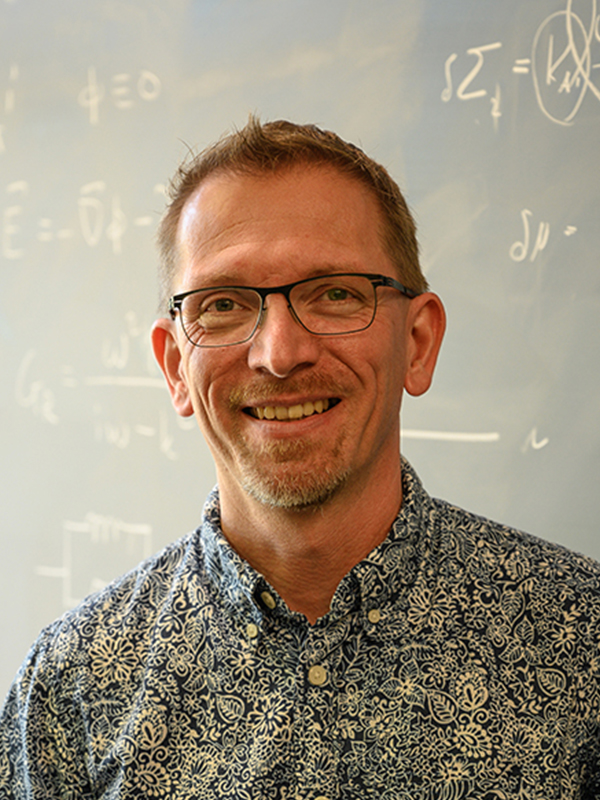
MARKUS DESERNO ELECTED APS FELLOW
Professor of Physics Markus Deserno was elected as a fellow of the American Physical Society (APS).
Deserno was nominated by the APS Division of Biological Physics “for pioneering contributions to the theory and simulation of biological membranes and proteins and their interactions, leading to improved understanding of cellular mechanics and self-organization.”
Fellowship is a distinct honor signifying recognition by one’s professional peers and is limited to no more than one-half of one percent of the society’s members. Fellows are elected based on their contributions to physics — through research, application of physics, leadership and service, or physics education.
Deserno’s work focuses on the physical problems that occur within the context of molecular cell biology, focusing on cells’ lipid membranes and the molecules that interact with those membranes to carry out vital processes. His coarse-grained simulations have been used to explain a number of cellular processes, including dynamin-driven membrane fission and viral assembly.
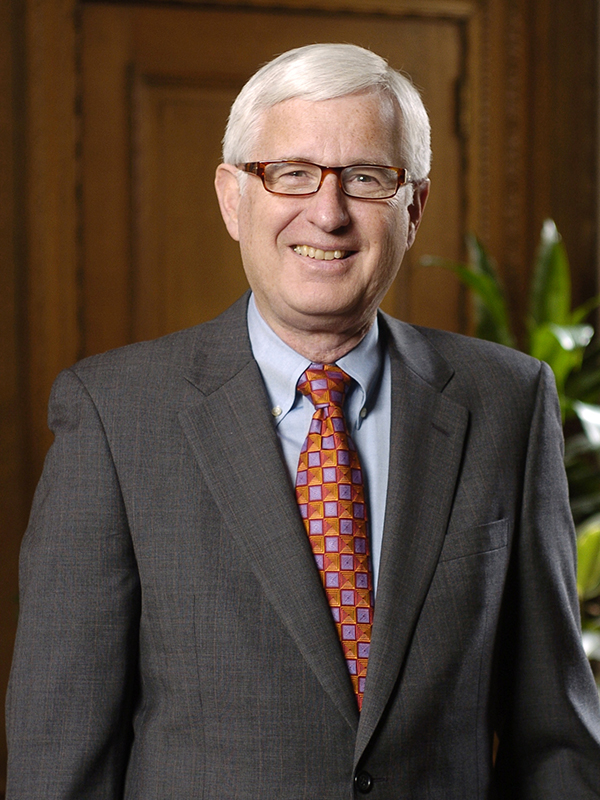
Fred gilman ELECTED AAAS Fellow
Buhl Professor of Theoretical Physics Fred Gilman was elected to the American Association for the Advancement of Science’s (AAAS) 2019 class of fellows. Gilman was recognized for his work elucidating the fundamental nature of CP violation, a key component of an explanation of the dominance of matter over antimatter in the universe, and his sustained and successful leadership in the particle physics and cosmology communities.
Among his many accomplishments, Gilman served for six years as chair of the committee overseeing the construction of the Large Synoptic Survey Telescope. From 1999 to 2005, he chaired the High Energy Physics Advisory Panel, which advises the National Science Foundation and the Department of Energy (DOE) on setting the nation’s priorities for particle physics. For over a decade he was one of three senior advisors designated by the DOE under the U.S.-China Agreement on Cooperation in High Energy Physics.
He joined Carnegie Mellon in 1995 and served as head of the Department of Physics from 1999 to 2008 and dean of the Mellon College of Science from 2007 to 2016. Prior to coming to CMU, Gilman was the associate director and led the physics research portion of the Superconducting Supercollider and was a faculty member at Stanford University.
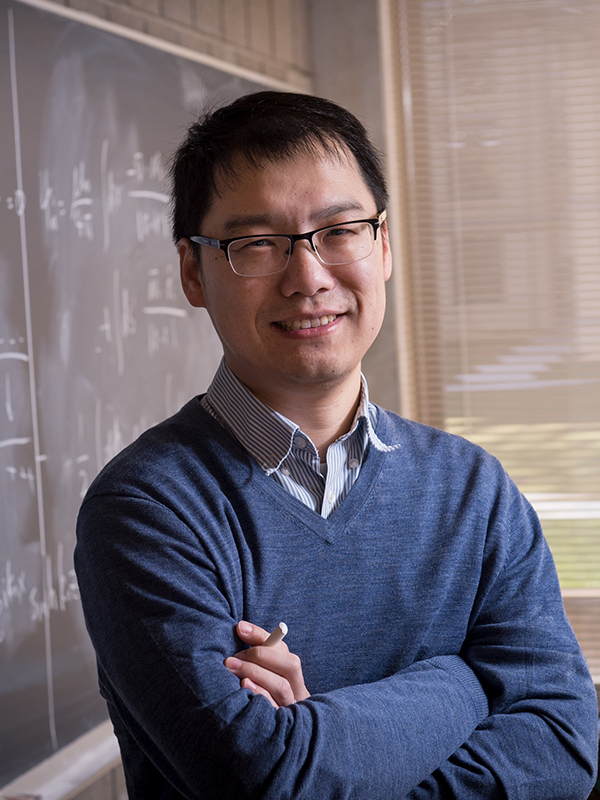
DI XIAO NAMED ONE OF WORLD’S MOST HIGHLY CITED RESEARCHERS
Di Xiao, associate professor of physics, was listed among the most cited researchers in the field of physics in 2019, according to a list published by Clarivate Analytics. Xiao’s research looks at the properties of materials in relation to quantum mechanics and how these properties can be harnessed for applications in electronic and magnetic devices.
The list was based on citations in papers published between 2008 and 2018. This year’s list includes more than 6,000 highly cited researchers in 21 fields of the sciences and social sciences and cross-field researchers whose work is highly cited in more than one field. Researchers make the list if their research publications were in the top one percent of the most cited papers for their subject field and year and indexed in the Web of Science Group indexing platform operated by Clarivate Analytics.
BARRY LUOKKALA RECEIVES CARNEGIE MELLON’S RYAN AWARD
For nearly six decades, the William H. and Frances S. Ryan Award for Meritorious Teaching has annually recognized a Carnegie Mellon faculty member who demonstrates “unusual devotion and effectiveness in teaching.” To many, that description fits Physics Teaching Professor Barry Luokkala to a tee.
“Over his almost 40-year career, Barry’s dedicated efforts have made him truly one of our stellar teachers,” wrote Department Head and Professor of Physics Scott Dodelson; Otto Stern Professor of Physics Curtis Meyer; Professor of Physics Stephen Garoff; Associate Teaching Professor David Anderson; and senior Eric Lester in nominating Luokkala for the Ryan Award.
After initially joining Carnegie Mellon as a lab demonstrations technician, Luokkala began teaching physics at CMU in 1983. He was quickly given responsibility for the introductory lab course Experimental Physics, and he later worked to develop the Basic Experimental Physics course for students in the Health Professions Program. He also earned his Ph.D. in physics from CMU while teaching and working full-time.
“His success can be marked by the popularity of the courses,” Luokkala’s nominators noted. “The lab classes are always overenrolled even as we have built more space for each of the courses.”
In addition to designing, teaching and writing textbooks for both of these courses, Luokkala has also leveraged his personal passion for science fiction into developing two courses based around connecting the science and technology seen in films to what’s possible in the real world.
Students are asked to decide, by reasoning or by calculation, whether or not the scenarios in the films are based on good science,” Luokkala said in describing the class. “Students in the course always enjoy being able to engage the subject matter in this way and in the lively discussion that occurs.”
The full version of Science and Science Fiction attracts many students from outside MCS and routinely has long waitlists. Its innovative success gave Luokkala the opportunity to write a textbook that is now used at two other universities and led him to being invited to a national science fiction conference.
Outside of teaching, Luokkala has played a pivotal role in leading the Pennsylvania Governor’s School for the Sciences at CMU and in mentoring dozens of undergraduate, graduate and high school students.
“Throughout my career, from my earliest years as a student and even to the present day, I have been blessed with a series of outstanding role models and mentors,” Luokkala said. “My role as a teacher is to do for my students what was done so well for me over the years — to do all I can to encourage the next generation to be the best that they can be.”

